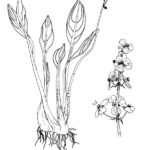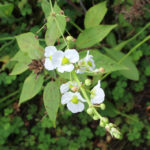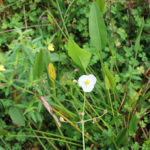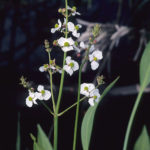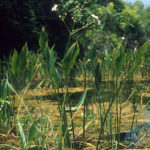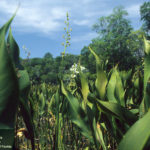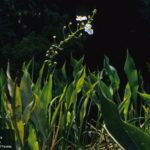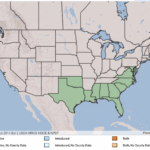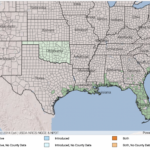Sagittaria lancifolia
USDA, NRCS. 2018. The PLANTS Database (http://plants.usda.gov, 28 March 2018). National Plant Data Team, Greensboro, NC 27401-4901 USA.
Illustration courtesy of University of Florida/IFAS Center for Aquatic and Invasive Plants. Used with permission.
What is Bull Tongue Arrowhead?
Other common spellings and names include: lanceleaf arrowhead.
Physical Characteristics
Leaves:
- Straight
- Blades oval- to elliptical-shaped or sword-shaped
- Not lobed
- Tapering at both ends
- Firm
- Up to 1.25 feet long & 0.25 feet wide
Flowers:
- Sepals fleshy
- Stamen with slender filaments no longer than the anthers
- About 0.4 inches in diameter
- Blooms Jun – Aug
Fruit:
- One seeded
- Does not open to release seed when ripe
- Wedge-shaped or sword-shaped
- Up to 0.09 inches long & 0.02 inches wide
Stem:
- Simple or branching at lower nodes
- Main axis can have as many as 10 whorls
- Bracts oval-shaped, up to 0.59 inches long
Where Does it Grow?
Bull tongue arrowhead can be found in swamps, marshes, wet muddy ground, and along streams.
Pros and Cons of Arrowhead
The tubers of arrowheads are prized foods by ducks, geese, muskrats, and nutria. Seeds are sometimes consumed by ducks. Submerged portions of all aquatic plants provide habitats for many micro and macro invertebrates. These invertebrates in turn are used as food by fish and other wildlife species (e.g. amphibians, reptiles, ducks, etc.). After aquatic plants die, their decomposition by bacteria and fungi provides food (called “detritus”) for many aquatic invertebrates.
